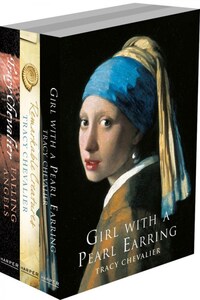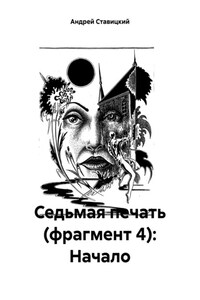My mother did not tell me they were coming. Afterwards she said she did not want me to appear nervous. I was surprised, for I thought she knew me well. Strangers would think I was calm. I did not cry as a baby. Only my mother would note the tightness along my jaw, the widening of my already wide eyes.
I was chopping vegetables in the kitchen when I heard voices outside our front door — a woman's, bright as polished brass, and a man's, low and dark like the wood of the table I was working on. They were the kind of voices we heard rarely in our house. I could hear rich carpets in their voices, books and pearls and fur.
I was glad that earlier I had scrubbed the front step so hard.
My mother's voice — a cooking pot, a flagon — approached from the front room. They were coming to the kitchen. I pushed the leeks I had been chopping into place, then set the knife on the table, wiped my hands on my apron, and pressed my lips together to smooth them.
My mother appeared in the doorway, her eyes two warnings. Behind her the woman had to duck her head because she was so tall, taller than the man following her.
All of our family, even my father and brother, were small.
The woman looked as if she had been blown about by the wind, although it was a calm day. Her cap was askew so that tiny blonde curls escaped and hung about her forehead like bees which she swatted at impatiently several times. Her collar needed straightening and was not as crisp as it could be. She pushed her grey mantle back from her shoulders, and I saw then that under her dark blue dress a baby was growing. It would arrive by the year's end, or before.
The woman's face was like an oval serving plate, flashing at times, dull at others. Her eyes were two light brown buttons, a colour I had rarely seen coupled with blond hair. She made a show of watching me hard, but could not fix her attention on me, her eyes darting about the room.
‘This is the girl, then,’ she said abruptly.
‘This is my daughter, Griet,’ my mother replied. I nodded respectfully to the man and woman.
‘Well. She's not very big. Is she strong enough?’ As the woman turned to look at the man, a fold of her mantle caught the handle of the knife I had been using, knocking it off the table so that it spun across the floor.
The woman cried out.
‘Catharina,’ the man said calmly. He spoke her name as if he held cinnamon in his mouth. The woman stopped, making an effort to quiet herself.
I stepped over and picked up the knife, polishing the blade on my apron before placing it back on the table. The knife had brushed against the vegetables. I set a piece of carrot back in its place.
The man was watching me, his eyes grey like the sea. He had a long, angular face, and his expression was steady, in contrast to his wife's, which flickered like a candle. He had no beard or moustache, and I was glad, for it gave him a clean appearance. He wore a black cloak over his shoulders, a white shirt, and a fine lace collar. His hat pressed into hair the red of brick washed by rain.
‘What have you been doing here, Griet?’ he asked.
I was surprised by the question but knew enough to hide it. ‘Chopping vegetables, sir. For the soup.’
I always laid vegetables out in a circle, each with its own section like a slice of pie. There were five slices: red cabbage, onions, leeks, carrots and turnips. I had used a knife edge to shape each slice, and placed a carrot disc in the centre.
The man tapped his finger on the table. ‘Are they laid out in the order in which they will go into the soup?’ he suggested, studying the circle.
‘No, sir.’ I hesitated. I could not say why I had laid out the vegetables as I did. I simply set them as I felt they should be, but I was too frightened to say so to a gentleman.
‘I see you have separated the whites,’ he said, indicating the turnips and onions. ‘And then the orange and the purple, they do not sit together. Why is that?’ He picked up a shred of cabbage and a piece of carrot and shook them like dice in his hand.
I looked at my mother, who nodded slightly.
‘The colours fight when they are side by side, sir.’
He arched his eyebrows, as if he had not expected such a response. ‘And do you spend much time setting out the vegetables before you make the soup?’
‘Oh no, sir,’ I replied, confused. I did not want him to think I was idle.
From the corner of my eye I saw a movement. My sister, Agnes, was peering round the doorpost and had shaken her head at my response. I did not often lie. I looked down.
The man turned his head slightly and Agnes disappeared. He dropped the pieces of carrot and cabbage into their slices. The cabbage shred fell partly into the onions. I wanted to reach over and tease it into place. I did not, but he knew that I wanted to. He was testing me.








